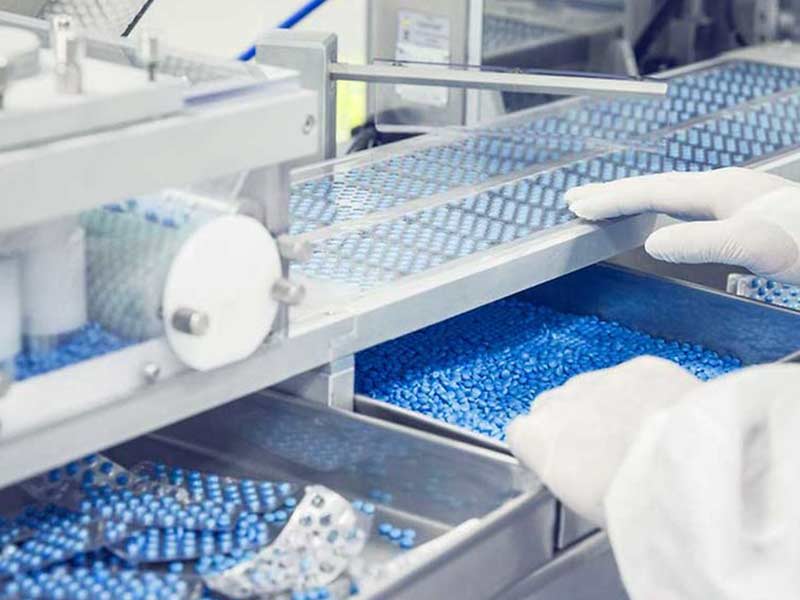Since the COVID-19 outbreak, the pressure on pharmaceutical companies to get their medicines to market faster has increased dramatically. To this end, pharmaceutical companies are now paying more and more attention to the digital transformation of drug production, hoping to4.0to simplify processes, increase efficiency and speed up production.
The pharmaceutical industry has always played an important role in safeguarding the health of people around the world, inCOVID-19This is especially true in times of epidemics. The people of the world urgently need to be vaccinated on a large scale, and the sooner the better. It is very rare to see so many demands on an industry in such a short period of time and with such high stakes. Faced with this unprecedented challenge, vaccine manufacturers realized they needed to redesign their processes and embrace the latest digital technologies. Drugs are now being brought to market in shorter times than ever, and their development cycles are getting shorter and shorter. Pharmaceutical companies need to make more data-based decisions and risk assessments when conducting process development. With the adoption of new models, pharmaceutical companies are increasingly using data, automation, and simulation to reduce risk and develop holistic, actionable control strategies. By improving processes, the industry is ready for new challenges.

Data A Analytics Could Make Drug Production Process Transparent
1.The Pharmaceutical Factory Of The Future
In the factory of the future, data is everything. In complex processes, sensors and equipment generate a continuous stream of data, providing real-time snapshots and digital records; data analysts and process managers can then use this data to develop new ways to maintain and optimize equipment using machine learning; this enables It’s called “plug and play”. It describes a world full of smart devices, where devices are not siloed but communicate seamlessly across companies, partners, platforms, and locations and processes.
International Society for Pharmaceutical Engineering(ISPE)The “Plug and Play” working group was established a few years ago. The working group is to advance the implementation of the pharmaceutical industry4.0part of the production plan. The entire pharmaceutical ecosystem is now undergoing a gradual digital transformation involving device manufacturers, software solution providers and regulators. Therefore, more and more tools and solutions are required to support “plug and play” production. Manufacturers committed to accelerating digital transformation can easily integrate new systems and make data-based decisions that can optimize processes and reduce costs.
2.Digital Transformation And The “Pharmaceutical Industry4.0”The Road
Laying the groundwork for the digital transformation of a pharmaceutical plant is no mean feat, but the potential benefits of doing so are enormous. Factories using a single source of truth can perform in-depth real-time data analysis, which can bring important advantages as follows:
- shorter time to market;
- Lower cost drug development, saving consumers and society as a whole;
- Better collaboration and data sharing between pharmaceutical companies and contract manufacturers;
- Realize the transition from regular maintenance to more efficient, self-condition-based maintenance and, in the future, preventive maintenance;
- Be able to better identify phases and transitions in a continuous process and be able toKPIs(Key Performance Indicator) allocation;
- Improve product quality visibility throughout the manufacturing process, instead of confirming product quality only at the end of the production cycle.
From advanced analytics to artificial intelligence(AI), many technologies have the potential to change the way employees in pharmaceutical companies work. Pharmaceutical companies can use new technologies to gradually reach the pharmaceutical industry4.0standards to increase productivity and shorten production cycles. Of course, it also guarantees the integrity of the product.
The pharmaceutical factory of the future will be deeply influenced by its goals and priorities. Objectives must be clear and measurable, whether improving overall equipment efficiency (OEE) or other fixed indicators. Thanks to new tools and technologies, pharmaceutical companies are well-positioned to achieve their goals. Thus, in order to achieve high goals, even at high risks, pharmaceutical companies can push their limits by setting short-term and long-term goals.

3.The Combination Of Culture And Technology
Pharmaceutical industry4.0The new standard of quality management can only be achieved through team effort. The pharmaceutical factory of the future needs a dedicated workforce. The team includes fromCEO(CEO) to every worker on the production floor. All relevant personnel have real-time access to process data and fully participate in production. Real-time access to process data enables employees to fully understand the process and resolve critical issues in a timely manner. For many pharmaceutical companies, the increase in the number of people with access to real-time data means a cultural shift. By empowering every employee, manufacturers can enable more employees to make real, positive change. Retrofitting a production floor also requires a team with the right technology and skills. The technical teams planning and using the new system, as well as the end users who use the production floor every day, need to be trained accordingly so that they can develop new strategies.
4.Production Closed-Loop Management
Pharmaceutical companies working towards the goal of the smart factory of the future need to really focus on the people who work on the production floor, not just the acceptance of those users. Employees across the company need to understand how changes in technology and processes will benefit them. For example, they need to understand how these changes will make their jobs easier, as well as make them aware of things they haven’t been exposed to before. The employees involved in production need the answers to these questions most, and they will benefit the most from this new data and the new insights it brings. Pharmaceutical companies need to rely on the feedback and expertise of their experts to develop a networking strategy that will help the company succeed.
5.Think Big, Start Small
Because production facilities are limited by natural conditions, pharmaceutical companies can only upgrade them in a limited range. While the immediate adoption of a variety of new processes, technologies, and tools is an appealing proposition, truly meaningful transformation won’t happen overnight. We should plan to start with a series of smaller, easily measurable steps and make the transition step by step. But starting small doesn’t mean big planning isn’t possible, and designing the factory of the future still requires a holistic approach. The approach needs to prioritize enterprise architecture, underlying infrastructure, and scalability. Long-term plans can not only serve as a guiding light for the future, but also help companies build the right foundation for development. Pharmaceutical companies are still exploring how to use data to streamline processes, increase efficiency, and create new drugs faster. Believe that in the future, with the right tools and change management strategies, the pharmaceutical industry4.0Ideas can drive real business change.










